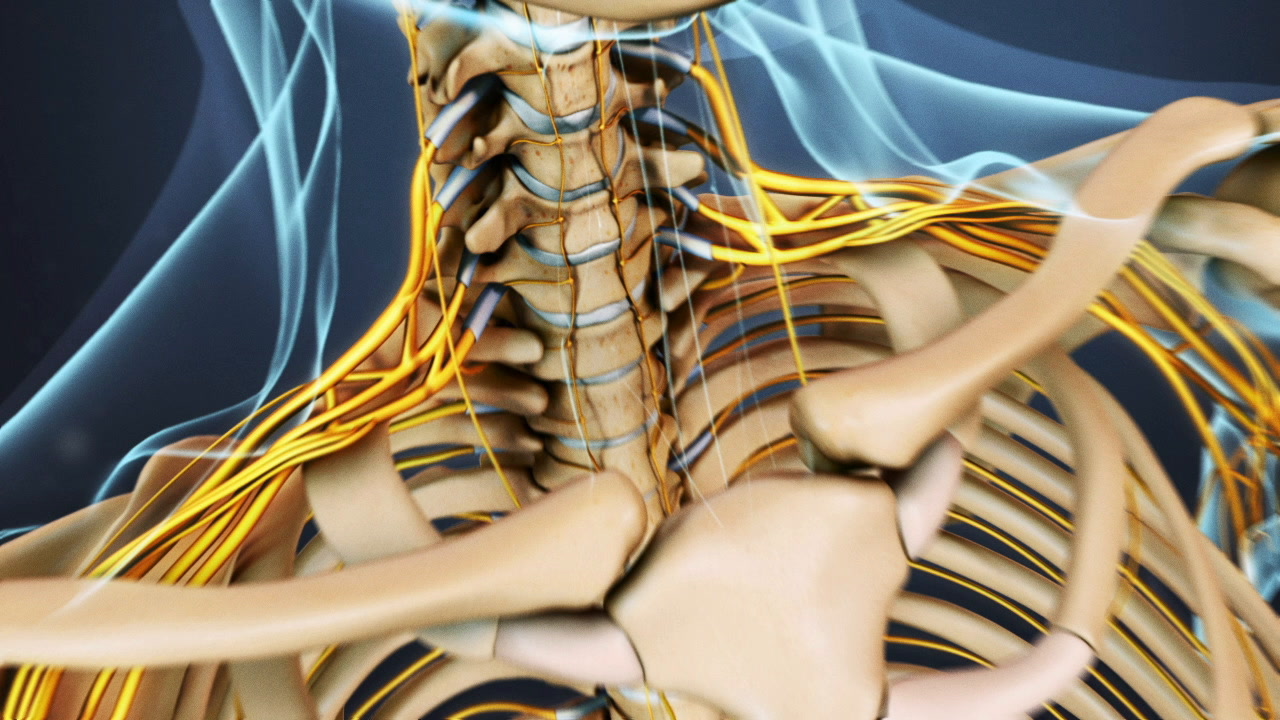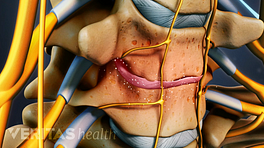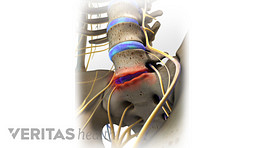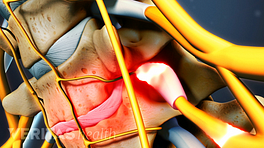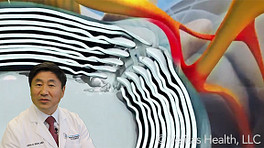Cervical degenerative disc disease is diagnosed when a damaged disc in the spine becomes symptomatic.
A cervical spinal disc is a piece of soft tissue that is an essential part of each motion segment in the neck.
The strong, fibrous outer portion of a spinal disc, called the annulus fibrosus, wraps around the jellylike inner core of the disc, the nucleus pulposus.
The disc is prone to degeneration over time, in which the inner core of the disc loses hydration and becomes less pliable. The disc loses height, and the outer annulus fibrosis weakens, bulges, and develops tears.
Degenerative disc disease is thought to cause pain in multiple ways.
It is thought that as the degenerated disc loses its height and pliability, pain may be caused by abnormal micromotion in the vertebral segment.
The degenerating disc itself may become a source of pain, as the inflammatory proteins from the inner core of the disc may affect nerve fibers in the outer annulus.
In some cases, the disc space may collapse enough to compress a nearby nerve root, leading to radiating arm pain known as cervical radiculopathy.
Neck pain from degenerative disc disease often goes away over a long period of time as inflammatory proteins eventually subside and the disc collapses into a more stable position.
Pain from cervical degenerative disc disease is usually felt as a stiff neck, but it can also radiate into the shoulders, arms, hands, and fingers, depending on which nerves are being compressed or irritated.
